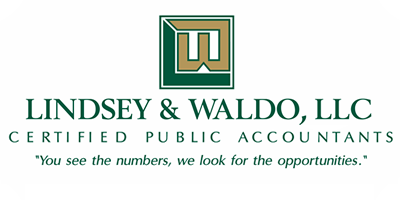I’m not just talking about tax disasters here.
(And those are very real — believe me when I tell you that there have been a few clients who didn’t allow us to help them do some basic tax planning for this past year, and who are now reaping the whirlwind of unfortunate — and avoidable — tax bills. More about tax planning in a future note.)
No, I’m actually talking about REAL disasters. With the Easter explosion in Pakistan and the terror in Brussels from last week, as well as the myriad natural disasters we have witnessed over the past year, we can’t help but be reminded that everything can change on a dime.
If you and I think we’re immune to disaster, we’re in denial.
So I’ve learned to stop apologizing for being an obsessive planner. It sort of pays to be that way, in my profession, after all. And this week, I wanted to remind you of what we almost never think about during “good” times: How to prepare your family for “grid-failure” emergencies.
This isn’t an area of extensive expertise for me, but it’s so important, I did some research, and have a good framework for you to consider.
Before I get there, here are a couple tax items to remind you of:
1) We’re rolling into April. Yes, the deadline is the 18th (and not the 15th) this year, but I think you know that we’re getting close, yes?
2) Tax scammers continue to plague the nation. The flavor of the minute is that the scammers are posing as members of the IRS Taxpayer Advocacy Panel. As with the other flavors, be suspicious always. Don’t click on any emailed links, don’t respond to the phone calls. If the IRS needs your attention, they will MAIL you. And we’re in your corner if that ever happens. So, in sum — ignore the phone calls and emails from people who say they’re with the IRS, however seemingly legit. And if you’re worried about something real (an unpaid IRS bill, or some such), contact the IRS yourself (800-829-1040) or let us help you (even better).
Now, let’s talk about if stuff really hits the fan.
Richard Lindsey’s 3 Essential Areas For Disaster Planning
“You have succeeded in life when all you really want is only what you really need.” -Vernon Howard
No, I am NOT a “prepper.”
But I’m continually reminded (in my line of work) of how important having a plan really is.
This is true for finances, and it’s equally true for other kinds of disasters.
We can be so complacent about the security of our daily existence, that an event like this seems unrealistic. But, we’re getting continued reminders, every year, at how fragile our modern world truly can be.
But that doesn’t mean you have to panic.
No, with a few basic points of disaster planning preparation, you and your family could be vastly more prepared than your neighbors, even giving you the opportunity to be ones who can support and assist your neighbors, rather than having to *ask* for support.
There are three primary areas where you need to be prepared:
- Energy/Power/Heat
- Water & Food
- Family
1) Energy: However unlikely a massive grid failure might seem now, it’s important that you at least think through what you and your family would do about heating your home during the winter (wood stove? indoor propane heater? burning your furniture?), and/or cooling your home during the summer (which may not be quite as critical).
Additionally, consider what parts of your existence are dependent on power, and what it would be like to live without it. Write down your plan.
2) Food & Water: It’s a very good idea to have food and water for at least 3 dayson hand, and in permanent storage. Typically, you need about a gallon of water, per person, per day … and non-perishable food is now so readily-available, that you have your pick for how to stock up. You can save water in a BPA-free plastic jug and just switch it out every 5 years.
3) Family Plan:
* Identify meeting places where you and your family would come together, in the event of some sort of catastrophic grid failure or event, in which you aren’t able to stay at home.
* Put together a “Go Bag” for your family, which carries critical supplies and information for whatever circumstance you may run across. Here is what your bag should include …
- A disaster plan including location of emergency centers, rallying points, possible evacuation routes, etc.
- Positive Identification, such as driver’s license, state I.D. card, or social security card
- Enough medicine to last an extended evacuation period
- Cash and change, as electronic banking transactions may not be available during the initial period following an emergency or evacuation
- A first aid kit
- Fire-starting tool (e.g., matches, ferrocerium rod, lighter, etc.)
- Professional emergency literature explaining what to do in various types of disaster, studied and understood before the actual disaster, but kept for reference
- Maps and travel information
- Standard camping equipment, including sanitation supplies
- Weather-appropriate clothing (e.g., poncho, headwear, gloves, etc.)
- Bedding items such as sleeping bags and blankets
- Medical records
- Pet, child, and elderly care needs
- Battery- or crank-operated Radio
- Lighting (battery- or crank-operated flashlight, glow sticks)
- Firearms and appropriate ammunition
- Fixed-blade and folding knife
- Duct Tape and rope/para-cord
- Plastic tarps for shelter and water collection
- Slingshot, pellet gun, blowgun or other small game hunting equipment
- Wire for binding and animal traps
This all might seem a bit excessive now … but so does every disaster plan — until disaster actually strikes.
So, perhaps make it a fun family activity to work through setting up these plans, and you’ll sleep much better knowing you’re prepared!
Warmly,
Richard Lindsey
251-633-4070
Lindsey & Waldo, LLC
